
Transit Briefs: Amtrak, NYMTA, SEPTA, Sound Transit, Tri-Rail
Written by Marybeth Luczak, Executive Editor
The final Brookville LRV to support Sound Transit’s T Line Hilltop Tacoma Link Extension has arrived in Tacoma, Wash. (Photograph Courtesy of Sound Transit)
Amtrak completes station upgrades in northeastern Missouri. Also, New York Metropolitan Transportation Authority (MTA) holds station operations exercise at Grand Central Madison; Southeastern Pennsylvania Transportation Authority (SEPTA) celebrates “a century of elevation”; the last of five LRV’s has arrived to support Sound Transit’s 2.4-mile extension of the Tacoma (Wash.) Link line; and south Florida’s Tri-Rail commuter railroad moves another step closer to serving MiamiCentral Station.
Amtrak on Nov. 13 held a ribbon-cutting ceremony for completing its $6 million station accessibility project in La Plata, Mo., according to a KTVO report. The station, built in 1887, is served by Amtrak’s Southwest Chief long-distance service between Chicago and Los Angeles.
“We had an ADA project a few years ago that did the interior and the platform upgrades,” Bob Cox, an Amtrak depot caretaker, told the news outlet. “And then we recently finished a state-of-good repair project, which gave us new windows, bricks, roof, gutters, siding, basically almost a new building. It’s still the original structure underneath, but it’s still upgraded for continued Amtrak service here for many years.”
“Before COVID, we served 11,000 people through this station,” Amtrak spokesman Marc Magliari told KTVO. “That is 10 times the population of La Plata because people come from far and near to ride the Amtrak trains here in La Plata.” The aim of the station project, he said, was “[m]aking this more welcoming, fixing the building systems, but not modernizing it. We wanted to keep the same look people had back in 1945, when the station was last rebuilt, and we’re very proud of the work.”
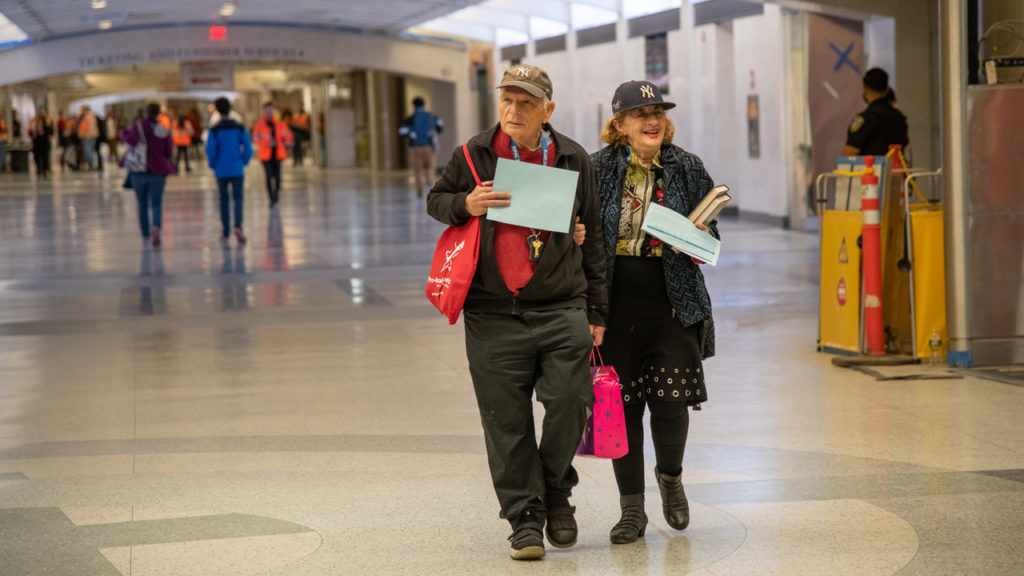
MTA on Nov. 13 held a station operations exercise at Grand Central Madison, which is slated to open later this year. Some 200 volunteers navigated the concourse and made notes on travel paths throughout the terminal, signage, and general way-finding elements.
The event included finding exits; platforms; elevators; multiple indoor locations such as the Ticket Office; ticket vending machines; and the office of the MTA Police Department. It also included external locations, such as subway connections and taxi stands, and connections with MTA Metro-North Railroad, Citi Bike locations, and other destinations.
“As visually impressive as Grand Central Madison is, functionality is always key,” said Catherine Rinaldi, interim MTA Long Island Rail Road President and Metro-North Railroad President. “These exercises are an important part of getting ready to welcome our customers to the new Grand Central Madison terminal, and we look forward to the day it opens its door to all of New York.”
LIRR crews last month entered the final stages of testing.
LIRR riders will see weekday service increase 41% system-wide when Grand Central Madison opens. The commuter railroad will add 269 trains per weekday to its current 677 for a total of 936 trains per weekday.
Construction of the East Side Access (ESA) project—originally conceived in the 1960s and developed in the 1990s—began in 2006 (see map below), and represents the largest expansion of LIRR service since the original Pennsylvania Station and its East River Tunnels opened Sept. 8, 1910. The project includes Grand Central Madison, located under Grand Central Terminal, which currently serves MTA Metro-North Railroad and MTA New York City Transit. Among the benefits of the new service: more evenly spaced trains and fewer large gaps in service; more frequent service to Queens; more frequent service on the Ronkonkoma and West Hempstead branches; a 28% increase in Brooklyn service; decreased travel times from Long Island to Manhattan; and less crowding at Penn Station, according to MTA.
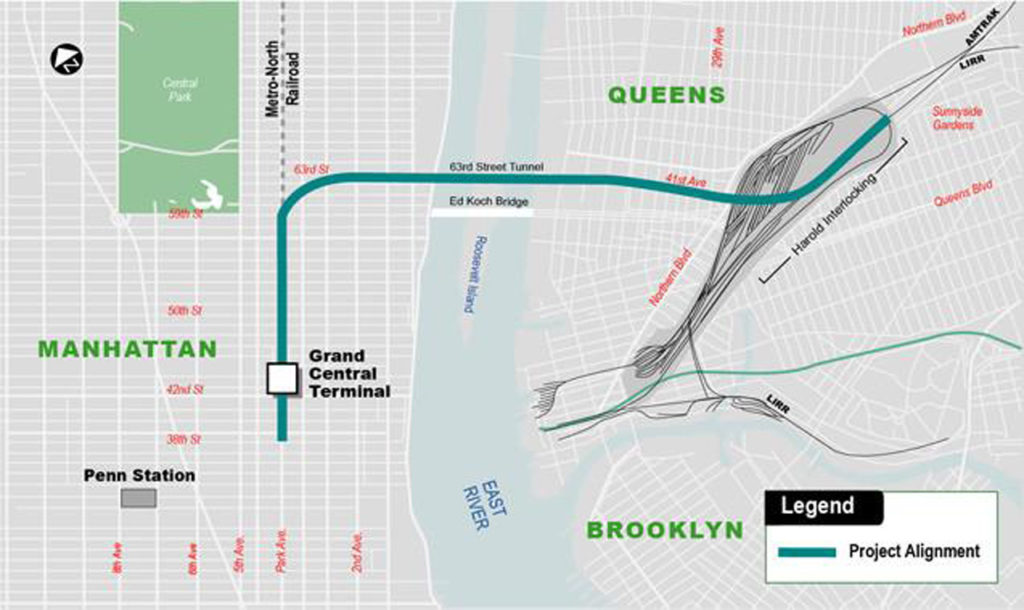
“The new route will also enable the LIRR to accommodate all anticipated customer demand to Manhattan when Amtrak begins a project in 2024 to rebuild its East River Tunnels to Penn Station,” according to MTA. “The project will take one of the four tunnels out of service, in sequence, over a period of three years, reducing LIRR capacity to Penn Station—capacity that the LIRR will be able to maintain to Manhattan with its new tunnels to Grand Central Madison. As ridership continues to recover following the pandemic, the new terminal allows the LIRR room for further growth in the years ahead.
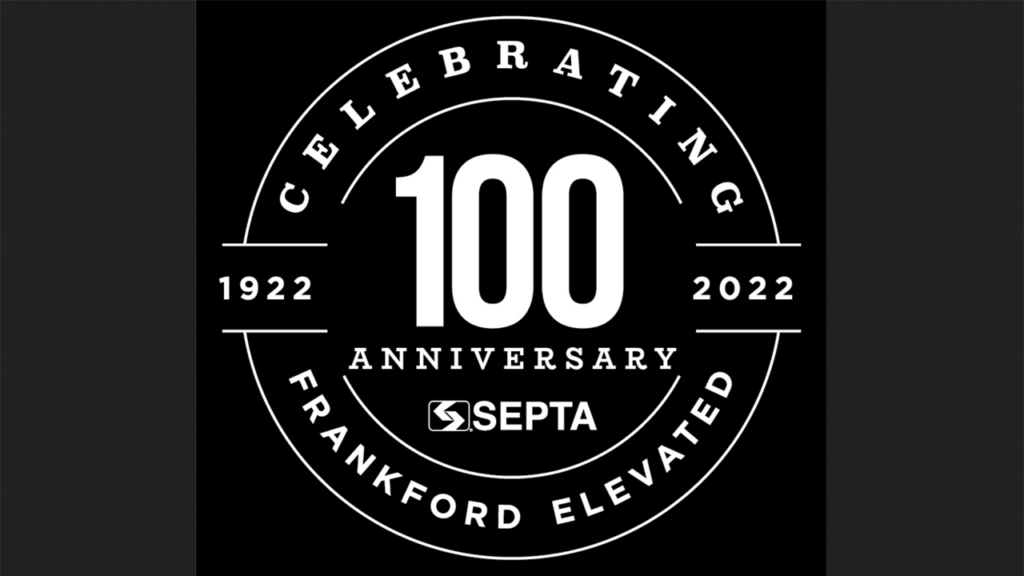
SEPTA and Philadelphia, Pa., officials on Nov. 11 marked the 100th anniversary of the Frankford elevated section of the Market-Frankford line.
“For 100 years, the Frankford section of Market-Frankford Line has connected Northeast Philly with Center City, and today [Nov. 11] we are so proud to mark this special milestone,” SEPTA CEO and General Manager Leslie S. Richards said. “We are grateful to the nearly 1,000 SEPTA employees who work tirelessly to operate and maintain what has become our most heavily used line.”
The line stretches 13.5 miles with 28 stations, allowing riders to get from Upper Darby/West Philadelphia to Frankford in lower Northeast Philadelphia in just 45 minutes.
The original Market Elevated Railway Line opened March 4, 1907, with approximately six miles of track for service from east to west from 69th Street to City Hall at 15th Street. The Frankford extension stretched the line from Old City to Bridge Street in Northeast Philadelphia.
“Construction of the long-awaited, 6.5-mile Frankford section Line began on September 13, 1915, and took seven years to build at a cost $11.6 million, equivalent to more than $200 million today,” according to SEPTA. “For the first time, people living in Northeast Philadelphia had access to Center City in an hour or less. The line boasted innovations like concrete in the support beams to reduce vibration and noise from passing trains, as well as railcar doors that automatically retracted if they bumped a passenger.
“The route of the ‘Frankford El’ changed slightly in the late 1970s, when the construction of I-95 through Center City led to relocation of the line to the highway median and construction of Spring Garden Station to replace the old Fairmount station. Between 1987 and 2000, SEPTA completely rebuilt the line to improve structural integrity.”
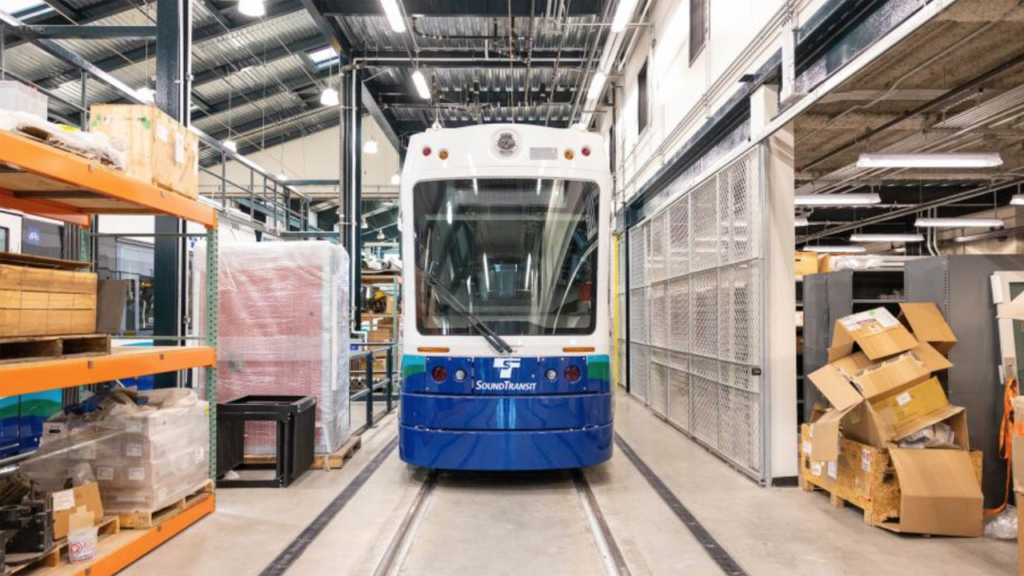
Sound Transit on Nov. 10 reported the final light rail vehicle to support its T Line Hilltop Tacoma Link Extension arrived in Tacoma. It is part of a $26.5 million, five-car contract that was awarded to Brookville Equipment Corporation in 2017.
Brookville in March 2022 began shipping the Liberty® NXT LRVs to Sound Transit for operation on the 2.4-mile extension of the agency’s 1.6-mile Tacoma Link line, which is slated to open in first-quarter 2023.
Measuring 66-feet long and 8-feet wide, each LRV will offer space for more than 100 riders, with roughly 68.570% low-floor available standing area, and seating for up to 26, with four accessibility seats for those with bikes and wheelchairs. The new fleet will also be ADA compliant with deployable bridge plates.
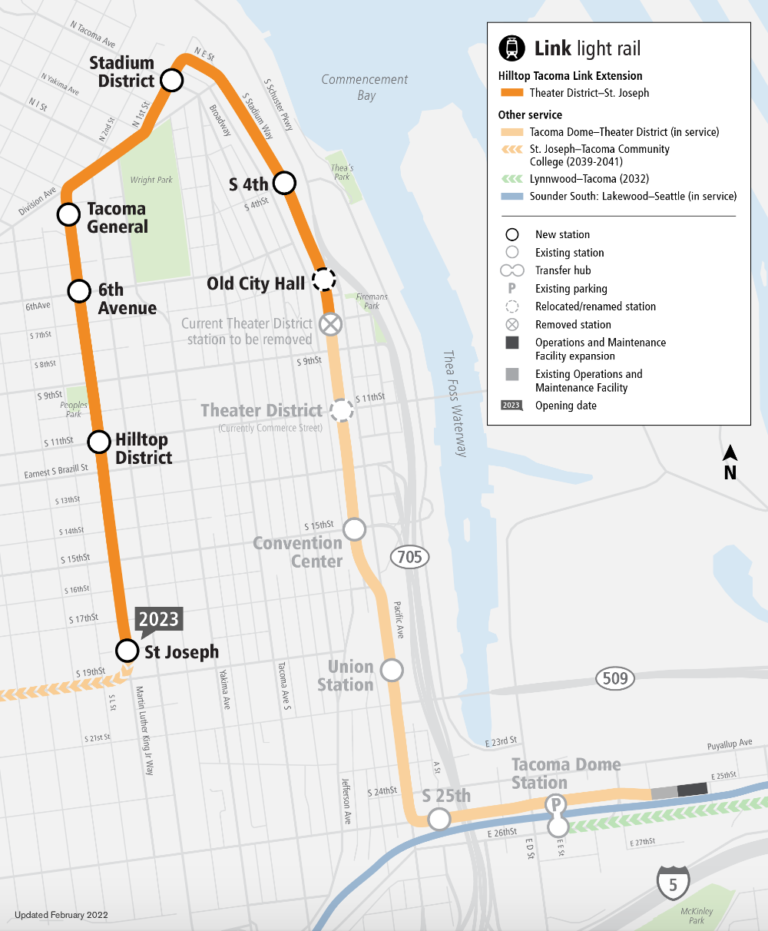
Sound Transit’s $217 million Hilltop Tacoma Link Extension project (see map, above) is set to more than double the length of Tacoma Link, starting with a relocated Theater District station, and adding six new stations connecting the Stadium District, Wright Park and major medical facilities before reaching the new Hilltop neighborhood terminus. It also includes an expansion of the transit agency’s Operations and Maintenance Facility in Tacoma.
Crews in the coming weeks will be performing rail grinding and testing cars on the new track, according to Sound Transit.
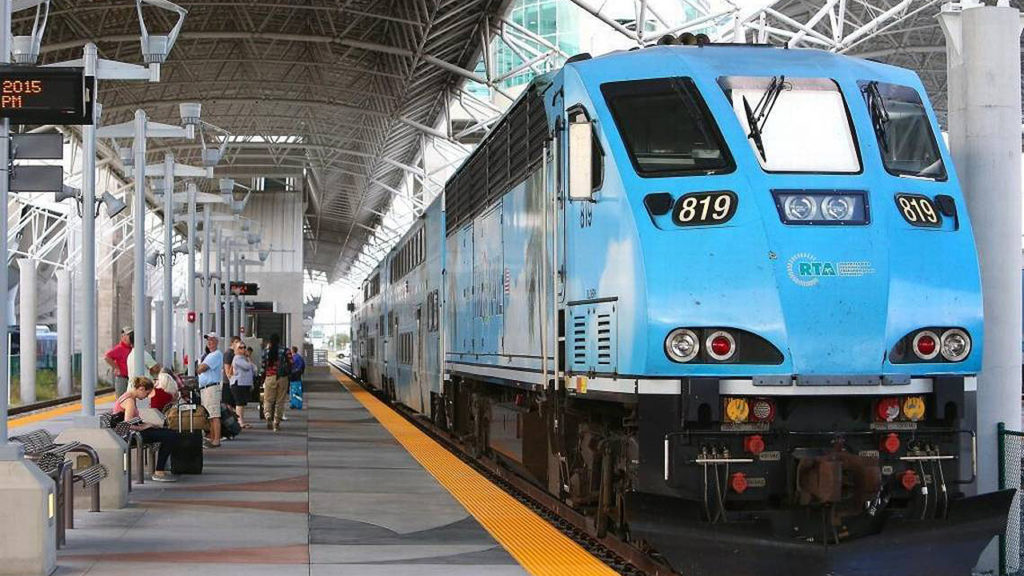
The South Florida Regional Transportation Authority (SFRTA) on Nov. 14 reported receiving a signed tri-party agreement, with Florida East Coast (FEC) Railway and Brightline, that permits SFRTA personnel to begin training and testing for the implementation of Tri-Rail commuter rail service at MiamiCentral Station. “The agreement shows progress in the ongoing negotiations for SFRTA to operate Tri-Rail trains on the approximate eight-mile span of the FEC Corridor that connects with the South Florida Rail Corridor, and opens the door for Tri-Rail trains to test at MiamiCentral Station,” SFRTA said.
SFRTA engineers and conductors will be trained for route familiarization, testing of power units and checking rides, according to the agency. Upon completion of qualifications, they will be authorized to train additional SFRTA employees. Testing of Automatic Train Control (ATC) and Positive Train Control (PTC) technology will also begin during this process, ensuring Tri-Rail trains meet the requirements set on the FEC Corridor, SFRTA said.
The plans to begin training and testing were approved by the Federal Railroad Administration (FRA) and all the signed parties, SFRTA reported.
“This latest milestone was made possible thanks to the building of a great partnership that has been key to move things forward,” said SFRTA Executive Director David Dech, who took on the role earlier this year. “One of my main goals when arriving in South Florida was to ensure we were having quality conversations with our partners at Brightline and the FEC, knowing it is the only way we are going to get through the hurdles that have been holding us up.”
The $70 million project to bring Tri-Rail trains to downtown Miami is slated for completion in 2023, Dech told the SFRTA Board on Sept. 23, according to Miami Today. The announcement came four months after former Executive Director Steven Abrams “assured the public that Tri-Rail trains would be in downtown Miami by November.”
For more on the project, read “Will Tri-Rail Reach Downtown Miami in 2022?”



